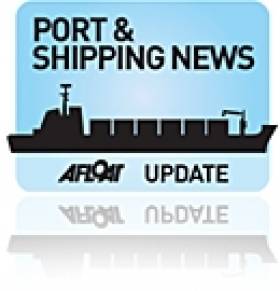Displaying items by tag: Cargo Increase
Drogheda Port Handled Over 1.2m Tonnes in 2014
#Ports - Drogheda Port Company handled over 1.2 million tonnes of cargo in 2014, an increase of 17% on 2013.
The port outperformed the Irish port sector in terms of year on year throughput growth for the third year running. The latest national volumes indicate that the volume of port and shipping traffic through the Republic of Ireland are slowly recovering.
Against this backdrop the port's volume growth is particularly impressive. Throughput volumes for 2014 are the highest recorded since 2005 when a record throughput of 1.4 million tonnes was achieved. The total value of goods traded through the port in 2014 was over €425 million.
A number of capital investments in the port were made in 2014 by the private sector with the aquisition of new cranes. The port has invested in new warehousing to be completed in 2015 and will expand the throughput capacity of the port and its role in the region supporting export businesses.
Nationally and internationally the outlook for the sector in 2015 remains challenging but positive, notwithstanding the current uncertainty in the financial markets.
Commenting on the ports performance CEO Mr Paul Fleming said “The company is pleased to report that trade volumes are continuing to increase significantly year on year. It is quite clear from the volume growth that the economy is starting to grow again and construction industry imports are increasing. It is also extremely positive for a number of indigenous companies who are exporting increasing volumes of product to the UK and Europe”
He also noted “The company will continue to support the local tourist economy with plans to provide facilities for cruise calls and the now established Irish Maritime Festival again taking place in the heart of the working port in June. The company are also supporting the development of the Boyneside greenway from Mornington to Drogheda.”





























































